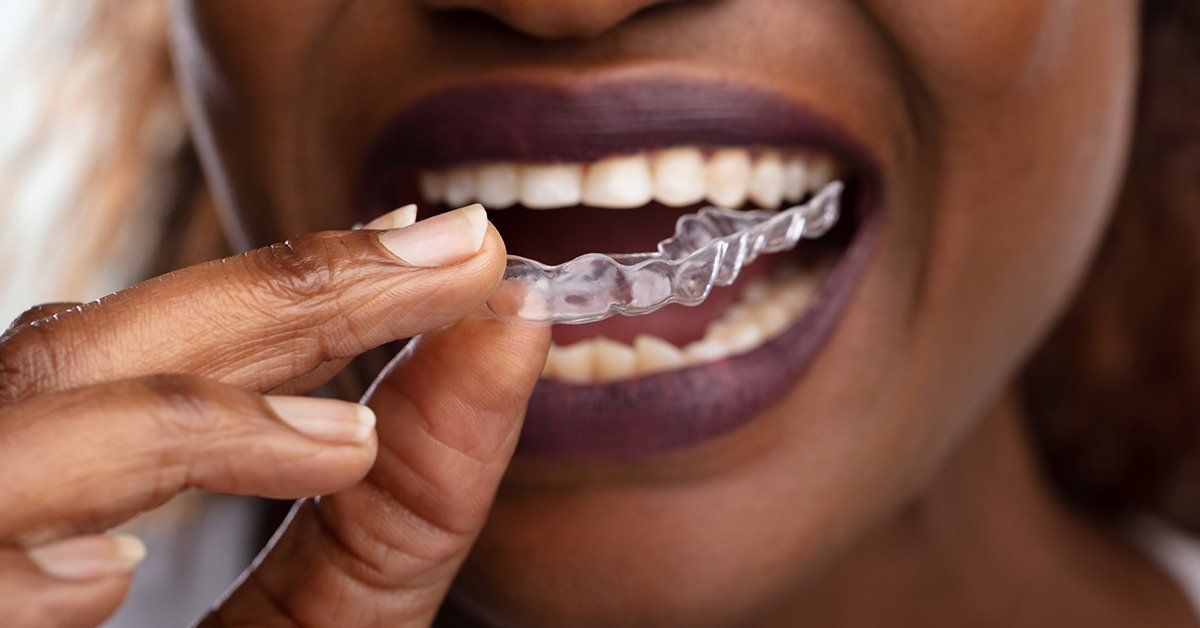Understanding What's Involved in the Invisalign Process
Don't let misinformation about Invisalign put you off getting your teeth fixed. Get the facts with this straight talking guide to the Invisalign process.
Wanting to perfect your smile as an adult is incredibly common. But finding the time and money to choose traditional bracket braces is next to impossible. The good news is that there are other effective ways to straighten your smile no matter your age.
Invisalign makes it easy to get the smile you always wanted without the painful, bi-monthly trips to the orthodontist.
Can Invisalign really transform your smile? Here's what's involved in the Invisalign process.
What is Invisalign?
Invisalign is a well-established alternative to metal braces. Rather than using wires and brackets to drag your teeth into the right position forcibly, Invisalign uses clear trays known as aligners to encourage your teeth to move back into proper alignment.
There are a lot of benefits that come with choosing Invisalign vs braces.
First, Invisalign aligners are subtle, so you can skip the adult braces look. Invisalign aligners also comfortable to wear all day, and they're far less painful than metal brackets. Plus, there are far fewer appointments involved. Bi-weekly tightening and adjustments aren't required.
What's involved in the Invisalign process? We have good news: there are only four steps between you and the smile you want.
Your Guide to the Invisalign Process
If you had braces as a kid or you watched friends go through the process of wearing fixed orthodontics, then you might have some concerns about what it means to visit the orthodontist. Those worries may have even prevented you from going after the smile you want.
The good news is that the Invisalign process is very different from metal braces. Here's how it works.
1. Your Initial Consultation
The very first thing you do when considering Invisalign is to visit a cosmetic dentistry specialist for a consultation to decide whether Invisalign is right for you.
While Invisalign can help you perfect your smile, it's not well suited to patients who need serious orthodontic work. Your dentist will assess whether you are a candidate for Invisalign and whether the Invisalign procedure will help you meet your goals.
During this appointment, you'll learn:
- Whether you're a candidate for Invisalign
- How Invisalign works
- What your treatment protocol is
- How long your treatment might last
If you're happy, then you move on to the second step in the Invisalign process: the mold.
2. Custom-Fitting Your Invisalign Aligners
To get the ball rolling, your dentist will then take photos, x-rays, and scans of your teeth and jaw. These images then go to the Invisalign laboratory, which will transform the images into Invisalign aligners that perfectly match your mouth.
For some people, this first mold will be the only one you need. You will get new aligners as you go, but you won't need to see the dentist or get new images for each new set of trays. However, you may need follow-up images if your treatment isn't working the way the dentist initially predicts.
Some patients with more complex cases that require more tooth movement may also need what are called attachments.
Attachments are bonding that keeps your aligners in place throughout the day and encourage more movement. These aren't like brackets found in metal braces. Attachments stay tooth-colored as long as you brush and floss after eating and drinking!
3. Follow-Up Appointments and Trays
Once you get your first set of Invisalign aligners, you're off and running!
Your next steps depend on your treatment protocol and the estimated length of treatment. However, they can vary depending on how quickly your teeth begin to move.
Over the next few months, you'll check in with your dentist to mark your progress and pick up new trays. But not all trays require a full dentist appointment. Your dentist will let you know when you need a check-up and when you can pick up your aligners and dash.
4. Your New Smile
Once you complete your last set of trays, you're done! Some patients will get a removable retainer to use at night. If you're someone who tends to forget their retainer, you might qualify for a permanent retainer instead.
See how easy Invisalign can be?
How Long Does Invisalign Take?
How long will my Invisalign treatment take? It's a question every new patient has. However, you won't get a definitive answer until you go in for your initial consultation.
Every patient has different circumstances and goals.
If you want to straighten a few teeth, you can expect to spend 12 to 18 months wearing your aligners. More complex cases take more time. However, most patients who are candidates for Invisalign can wrap up their treatments around 24 months (or slightly later) after they get their first trays.
Remember: some of your treatment time depends on you. If you follow your treatment protocol to the letter, you'll get better results - faster.
How Do You Care for Invisalign Aligners?
Caring for your trays is simple, but it does require you to commit to excellent hygiene.
You should remove your aligners whenever you eat or drink - you can keep them in when you sip water. And you should brush your teeth before putting them back in. Technically, you can rinse before putting them back in, but brushing is far better. So, it's best not to make rinsing a habit.
The good news is that it means you can eat or drink whatever you like during your treatment.
Are You Ready to Try Invisalign?
Is there something about your smile that you want to change? You can do it with Invisalign. The Invisalign process means you can straighten your smile without the pain and endless appointments that come with traditional braces.
Are you a candidate for Invisalign? There's only one way to find out. Get in touch with Garland K Davis, DDS for an Invisalign consultation in Laurel, MD.


